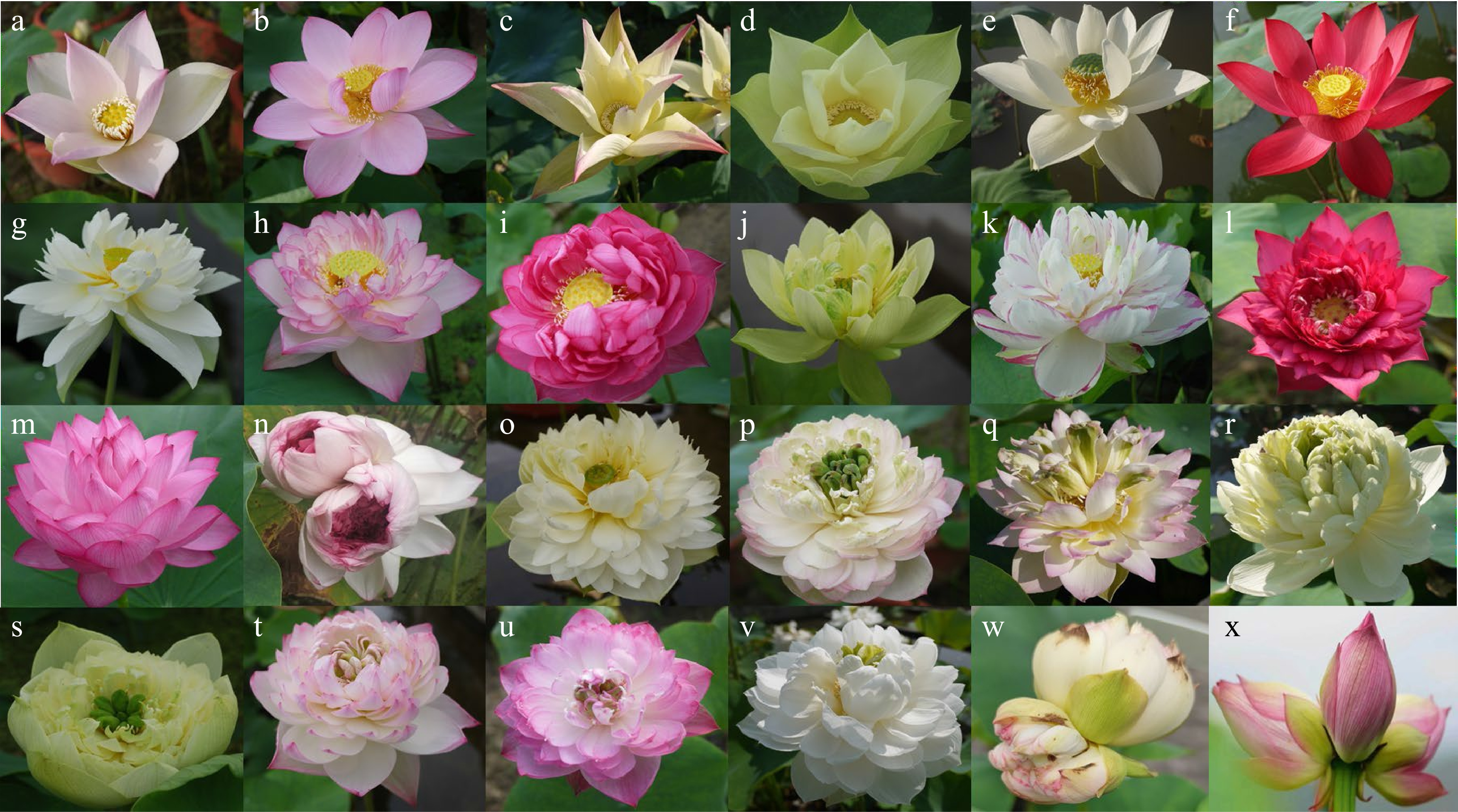-

Figure 1.
Geographical distribution of Nelumbo. The colored position on the map indicates the planting area of the lotus. The purple area indicates the main planting area of Nelumbo nucifera Gaertn.; the yellow area indicates the main planting area of Nelumbo lutea Pers. Dots on the map indicate the locations where wild species of lotus were collected. Black dots indicate the area where lotus fossils were unearthed, green dots indicate sections where Nelumbo nucifera Gaertn. are found, and orange dots indicate sections where Nelumbo lutea Pers. are found.
-

Figure 2.
Typical flower colors and types in lotus. The cultivar names of (a)−(x) can be found in Supplemental Table S1.
-

Figure 3.
The process of lotus breeding.
-
Origin of cultivar
informationCultivar number Percentage
(%)China 2,888 64.29 Japan 1,519 33.82 American 470 10.46 Australia 47 1.05 Thailand 12 0.22 The other parts* 21 0.71 Global total after weightless 4,492 * Species from Vietnam, India and Russia, and species recorded on the website of the International Water Lily Landscape Horticulture Association but of unknown origin. Table 1.
The number and geographical distribution of the global lotus cultivars[33].
-
Horticultural traits Genes References Flower color NnCHS, NnCHI, NnF3H, NnF3'H, NnF3'5'H, NnDFR, NnANS, NnMYB5, NnTT8 [92−95] Flower type NnTP1, NnTP2, NnSEP1, NnAGL9, NnMADS6, NnCMB1, NnMADS14, NnAG1, NnAG2 [91,96−99] Flowering period NnAP1, NnAP2, NnLFY, NnFT, NnCO, NnSnRK1 [98,100−102] Abiotic stress resistance NnPCS1, NnTPS, NnMT2a, NnANN1, LrZIP, NnsHSP17.5, NnGPX1, NnUBC, NnGPX, Mn-SOD, NnCDPK, NnCNF2, NnNHX1, NnWRKY41, NnγGGS, NnCBF [10,103−107] Root and seed NnGBSS, LrSSS, NnPPO, NnAGPL1, NnAGPLS, NnADAP, NnSSSIII, NnEXPA1, NnCOL5, NnSBE [108−110] miRNA miR408-5p, miR4414a-3p, miR5077, miR156, miR159, miR393, miR319c [111−114] Table 2.
Genes related to ornamental characteristics that have been cloned in Nelumbo.
Figures
(3)
Tables
(2)